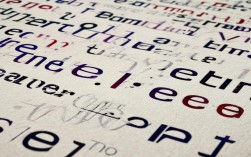在英语中,表达数量的词汇丰富多样,从基本的数字到描述程度的形容词,再到表示比较和范围的短语,这些词汇在日常生活、学术写作和商务交流中扮演着重要角色,掌握这些表达方式,不仅能提升语言准确性,还能让表达更加自然流畅。

基础数字与计数单位
英语的数字系统基于十进制,掌握基本数字是理解更复杂数量表达的基础。
- 基数词(Cardinal Numbers):表示具体数量,如 one, two, three…ten, hundred, thousand, million, billion。
- 序数词(Ordinal Numbers):表示顺序,如 first, second, third…tenth, hundredth。
- 分数(Fractions):如 half (1/2), a quarter (1/4), three-fourths (3/4)。
- 小数(Decimals):0.5 读作 “zero point five” 或直接 “point five”。
例句:
- The company sold over two million units last year.
- She finished the race in third place.
- Approximately three-fourths of the participants agreed with the proposal.
描述数量的形容词
除了具体数字,英语还有许多形容词用于描述大致数量或程度。
- Few / A few:few 表示“几乎没有”(负面含义),a few 表示“有一些”(正面含义)。
- Few people attended the meeting. (几乎没人来)
- A few students submitted their assignments early. (有几个学生提前交作业)
- Little / A little:little 修饰不可数名词,表示“几乎没有”;a little 表示“有一点”。
- There’s little water left. (几乎没水了)
- Add a little sugar to the tea. (加一点糖)
- Many / Much:many 修饰可数名词,much 修饰不可数名词。
- Many books are available in the library.
- Much effort is required to complete the project.
- Several:表示“几个”,通常指 3-10 个之间。
Several employees requested a day off.
表示“大量”或“少量”的表达
在正式和非正式场合,英语有多种方式表达“很多”或“很少”。
表示“大量”
- A lot of / Lots of:适用于可数和不可数名词,口语和书面语均可。
- A lot of people enjoy traveling.
- Lots of information was shared during the conference.
- A great deal of:通常修饰不可数名词,较正式。
A great deal of research supports this theory.

- Numerous / Countless:强调数量极多。
- Numerous studies have confirmed the findings.
- Countless stars can be seen on a clear night.
- Plenty of:表示“足够多”。
There’s plenty of time to finish the task.
表示“少量”
- A handful of:字面意思是“一把”,引申为“少数”。
Only a handful of candidates passed the exam.
- A couple of:通常指“两三个”。
I’ll be back in a couple of minutes.
- Scarce / Limited:强调稀缺或有限。
- Freshwater is scarce in some regions.
- We have limited resources for this project.
比较级与最高级表达数量差异
英语中常用比较级和最高级来对比数量或程度。
- More / Less:表示“更多”或“更少”。
- More data is needed to draw a conclusion.
- Less time was spent on this task than expected.
- Most / Least:表示“最多”或“最少”。
- Most participants preferred the first option.
- This method requires the least effort.
- As much as / As many as:用于强调数量之多。
- The event attracted as many as 10,000 visitors.
- He earns as much as a senior manager.
表示“大约”或“精确”数量的词汇
在不确定具体数字时,可用以下词汇表达估算或范围。
- Approximately / Roughly / About:表示“大约”。
- The flight takes approximately three hours.
- Roughly 50 people attended the workshop.
- Around / Some:非正式表达“大概”。
- The project cost around $5,000.
- Some 200 species were discovered in the area.
- Exactly / Precisely:强调精确数量。
- The meeting lasted exactly two hours.
- The machine weighs precisely 15 kilograms.
商业与学术中的数量表达
在商务报告或学术写作中,准确表达数量尤为重要。

- An increase / a decrease of X%:表示百分比变化。
Sales increased by 15% compared to last year.
- On average:表示平均值。
Employees work 40 hours a week on average.
- The majority / minority:表示“大多数”或“少数”。
The majority of respondents agreed with the policy.
- A significant number of:强调数量可观。
A significant number of errors were detected in the data.
常见搭配与易错点
- Much vs. Many:much 修饰不可数名词(much time),many 修饰可数名词(many books)。
- Fewer vs. Less:fewer 用于可数名词(fewer mistakes),less 用于不可数名词(less water)。
- Amount vs. Number:amount 用于不可数名词(amount of money),number 用于可数名词(number of people)。
例句对比:
- Correct: There is less traffic today.
- Incorrect: There is fewer traffic today.
- Correct: The number of applicants has risen.
- Incorrect: The amount of applicants has risen.
实用练习
尝试用以下数量词汇造句:

- Dozens of
- A significant amount of
- Nearly
- Twice as much as
- No more than
示例:
- Dozens of customers visited the store during the sale.
- The research required a significant amount of funding.
- Nearly half of the students passed the test.
- This model costs twice as much as the previous one.
- The package should weigh no more than 2 kilograms.
掌握这些与数量相关的英语单词和表达,能让你的语言更加精准和自然,无论是日常对话、写作还是专业报告,恰当使用数量词汇都能提升表达的清晰度和说服力。


